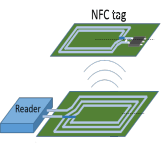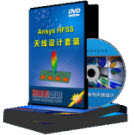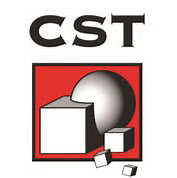SAR问题(急!)
上海同耀,那里不错
上海同耀,SGS均可以,一些天线厂家目前也可以测试
同耀好贵啊,从开始setup就开始算时间,而且里面的工程师只知道测,有社么问题都不知道怎么解决,也算在测试时间里面的.
我们SGS可以做,DASY 4测试系统
wei.wang@sgs.com
TEL: 0755-2671 0564
知不知道什么大学可以做吗
大学买不起sar测试系统的,如果你想省钱,又要测的准,最好的办法就是找个有dasy 4的天线公司的工程师,私下交易
qq15519617
楼上说的是,有些时候,工程师应该相互合做.
互惠互利.
1. Rollett showed that the , 0< 1 S L Γ < condition corresponds to a parameter known as the
“k-factor” being greater than unity, where
. So
in practical terms, if k >1 the device will never display an input or output reflecting
coefficient magnitude which is greater than unity, no matter what passive matching may be
placed at its input or output.
2. When the signal gain drops below 10dB, the extra RF drive power required will often cancel
out any efficiency advantage that had been carefully designed. The upshot of this is that one is
often looking for an optimum situation where k-factor is greater than unity, but not too much
greater. Devices with high k-factor also tend to have low gain, and some extra gain can be
retrieved by allowing positive feedback around the device, while keeping the k-factor above
unity.
3. Something about the k-factor which are worth noting:
(1) Any device which has a k-factor greater than, but not much greater than, unity displays a
more aggressive gain/match characteristic than a theoretical unilateral device. In
particular, the final MAG may be considerably higher, in a nearly matched condition,
than a simple voltage standing wave ratio (VSWR) mismatch calculation would indicate.
For example, such a device displaying a 10dB return loss may show more than the
calculated 0.7dB increase in gain when finally matched to -20dB return loss.
(2) Circuit loss can play havoc with the k-factor, and especially the frequency where it
crosses unity. In practice, devices can be safely used some way below the unity k-factor
point if the k-factor is based on fully de-embedded s-parameter measurements.
(3) The circuit environment in which a transistor is placed can modify significantly itseffective s-parameters, and especially the critical reverse transmission parameter, S 12.
This is probably the main cause of unexpected, or unsimulatable, stability problems.
(4) K-factor analysis, as presented here in its classical form, is only applicable to a single
stage amplifier. In a multistage environment, the condition , 0< 1 S L Γ < no longer
applies, because the input and/or output planes of an intermediate stage are terminated
with active networks. So taking a multistage amplifiers as a single two-port and
analyzing its k-factor is a necessary, but by no means sufficient, condition for overall
stability. This problem is often bypassed in multistage RF amplifier designs by the use of
some form of isolation between stages, although multistage stability analysis and design
strategies have been published.
4. Weakly nonlinearities may, for example, be intermodulation distortion at levels lower than,
say -30dBc.
Strongly nonlinear effects refer to the distortion of the signal waveform which is casued by
the limiting behavior o of the transistor.
5. Generally speaking, PAs operating at or beyond the 1dB compression point require more
careful treatment, since the nonlinearities become “strong” and arise through the cutoff and
clipping behavior of the transistor. Beware, especially, of analyses which truncate the power
series to include second- and third-order effects. The third-order nonlinearity is, undoubtedly,
an important contributor to compression and saturation effects in small signal amplifiers, but
in PAs the fifth- and seventh-degree terms become significant as the 1dB compression point is
approached and can dominate at higher drive levels.
6. The basic conjugate match theorem only applies in a completely unrestricted case where
currents and voltages at the generator terminals are unbounded by physical constraints. The
loadline match is a real-world compromise, which is necessary to extract the maximum power
from RF transistors and at the same time keep the RF voltage swing within specified limits
and/or the available DC supply.
The reason for the loadline match is to accommodate the maximum permissible current and
voltage swings at the transistor output.
看来谁有单可以给我哈!
呵呵。看来大家都对SAR越来越关注了
相关文章:
- 哪位知道Motorola折叠机V3的SAR值是多少?(05-08)
- 双摸SAR值的测量?(05-08)
- 请问各位先知:我国的SAR的标准是什么?(05-08)
- 国内的SAR标准会是怎么样的?(05-08)
- SAR测试(05-08)
- 关于SAR的生产线控制和测试问题(05-08)








